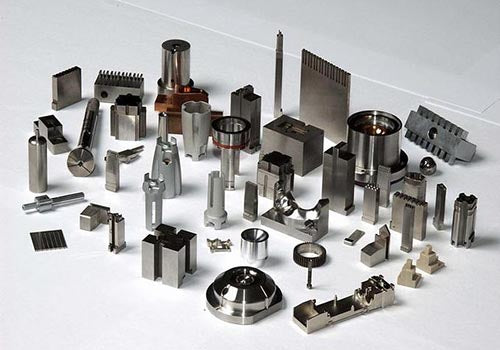
CNC Inserts Unveiled: The Science Behind Precision Machining
Share
Precision machining is an essential process in the manufacturing industry. It involves the use of a range of tools and techniques to remove unwanted material from a workpiece to achieve the desired shape and size. One of the most critical components of precision machining is the CNC insert. CNC inserts are responsible for creating the required shape and size of the workpiece with accuracy and precision. In this blog post, we'll take a closer look at CNC inserts and the science behind precision machining.
The Importance of CNC Inserts in Precision Machining
CNC inserts are the backbone of precision machining. These small, replaceable cutting tools are designed to fit into a CNC machine's cutting head, where they remove material from the workpiece. CNC inserts are essential because they determine the machining process's speed, accuracy, and surface finish. The right CNC insert can significantly improve the efficiency and quality of the machining process, making it possible to achieve tight tolerances and high-quality surface finishes.
The Science Behind Choosing the Right CNC Inserts
Choosing the right CNC insert is critical to the success of any precision machining process. There are several factors to consider when selecting CNC inserts, including the material being machined, the cutting speed, the feed rate, and the depth of cut.
One of the most important factors to consider is the material being machined. Different materials require different types of inserts. For example, when machining aluminum, a diamond-shaped insert with a positive rake angle is recommended. On the other hand, when machining steel, a square-shaped insert with a negative rake angle is preferred.
The cutting speed is another crucial factor to consider when selecting CNC inserts. The cutting speed is the speed at which the cutting tool moves across the workpiece. The cutting speed determines how quickly the material is removed from the workpiece. The correct cutting speed will help to achieve the desired surface finish and minimize tool wear.
The feed rate is the speed at which the cutting tool moves into the workpiece. The feed rate determines how much material is removed from the workpiece with each pass. The correct feed rate will help to achieve the desired surface finish, minimize tool wear, and maximize the tool's lifespan.
The depth of cut is the distance between the top of the workpiece and the bottom of the cut. The correct depth of cut will help to achieve the desired surface finish and maximize the tool's lifespan.
The correct combination of these factors will help to achieve the desired surface finish, minimize tool wear, and maximize the tool's lifespan. Additionally, the type of insert coating and geometry must be taken into account. For example, coatings like TiN, TiAlN, and TiCN can help to reduce wear on the insert, while a positive rake angle can improve tool life.
The Future of CNC Inserts in Precision Machining
The future of CNC inserts in precision machining looks promising. Advancements in tooling technology have made it possible to develop inserts that are more durable, efficient, and effective. Additionally, the use of advanced materials like ceramics and composites has paved the way for the development of cutting tools that can withstand higher temperatures, pressures, and speeds. These developments will help to improve the accuracy, efficiency, and speed of precision machining processes, making it possible to achieve tighter tolerances and higher-quality surface finishes.
Conclusion
In conclusion, CNC inserts are an essential component of precision machining. They play a critical role in determining the accuracy, efficiency, and quality of the machining process. Choosing the right CNC insert depends on several factors such as the material being machined, the cutting speed, the feed rate, and the depth of cut. The future of CNC inserts looks bright, with the development of new materials and technologies promising to make the machining process even more efficient and effective. The science behind precision machining is complex, but with the right tools and techniques, manufacturers can achieve high-quality results and produce products that meet their customers' exact specifications.




